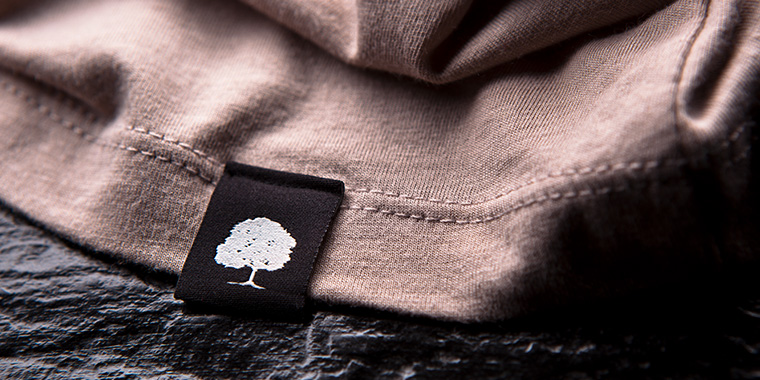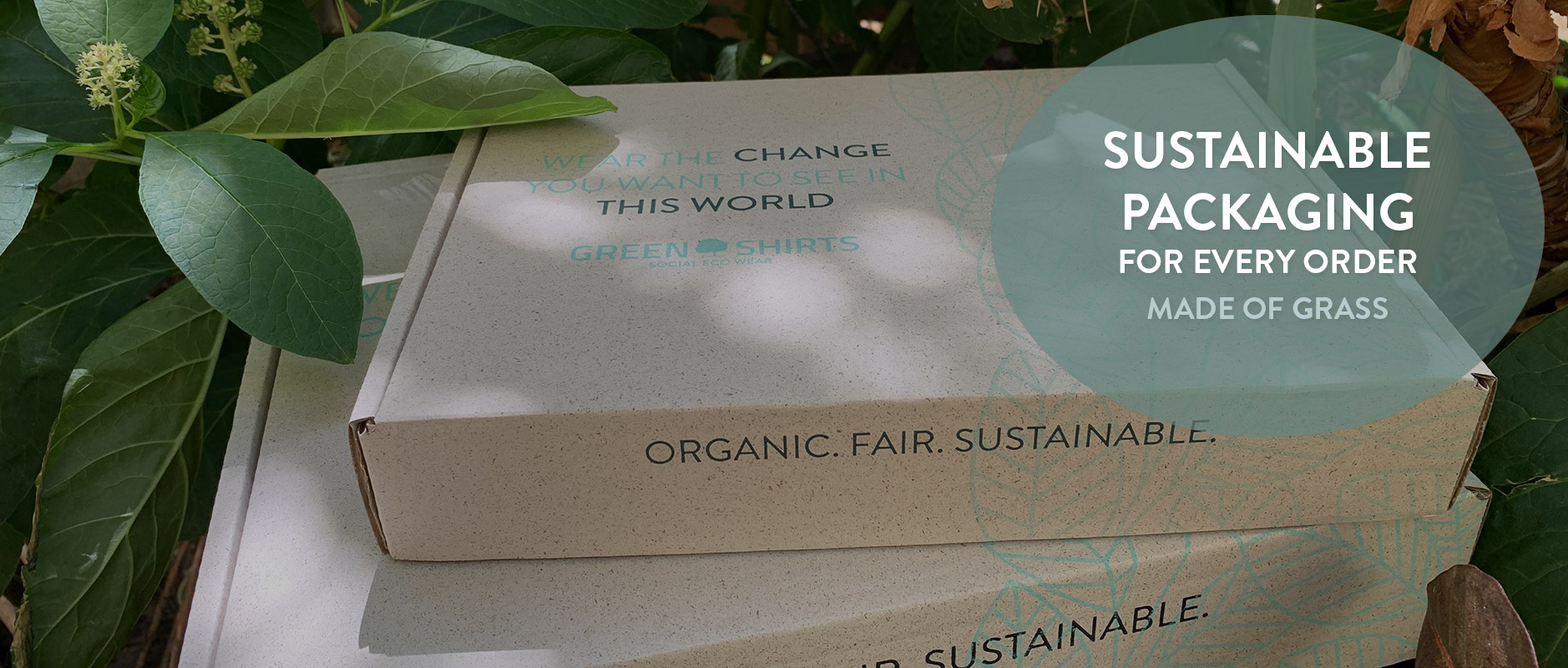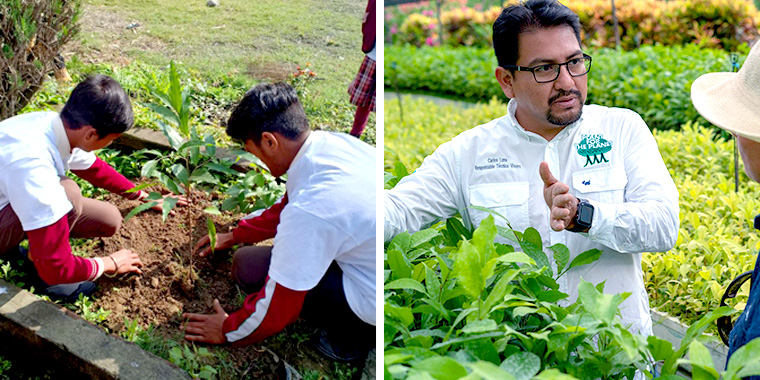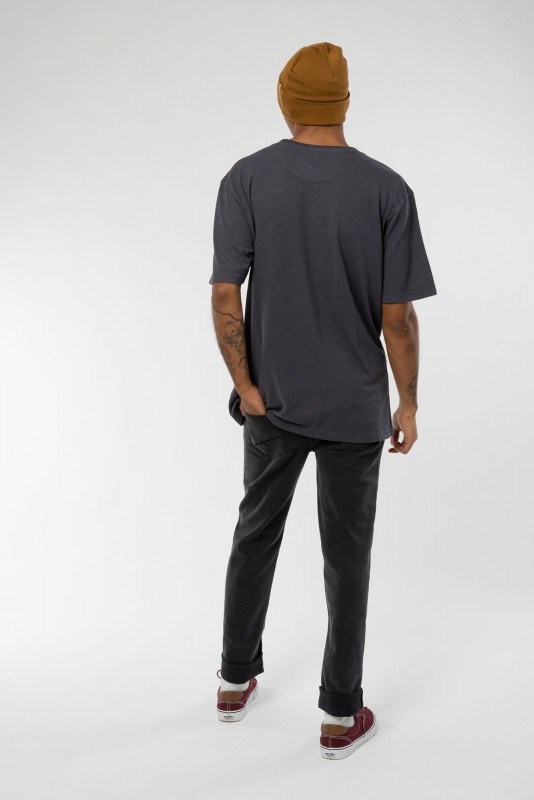Eco Bamboo T-Shirt for Men
Prices incl. VAT plus shipping costs
Ready for shipment, Delivery time 3-5 days
The eco bamboo fabric has a cooling effect. Perfect for the summer and for the midterm season.
70% bamboo, Cotton (Organic Cotton), / Fair Trade / maschine washable 30°
Fabric thickness & material: Jersey: 150 g/m² (normal thick)
Your order will be delivered directly to your address. Shipping is european wide, and you can track your order per delivery information you receive per mail. The shipping costs for your order will be calculated in the checkout.
Delivery
Your delivery will be processed usually in 1-3 days and produced/ shipped. Delivery time is approximately 5-7 business days. Climate neutral shipment is processed by " DHL Go Green" to any european address.
Returns
Returns are free. Just log in your account and print your personal shipping label. Please consider that our printed products , are all produced individually for your purposes. For the appropriate return address check the FAQ's
- Order number: M-N45-White-L
BAMBOO TEXTILES
Bamboo for reforestation and CO2 reduction
TEXTILES MADE OF BAMBOO
Bamboo is great for reforestation and carbon capture

and nature conserving resource option for textiles
with fascinating properties and great potential
BENEFITS FOR YOU

BENEFITS FOR THE WORLD
No need for artificial irrigation and use of pesticides or insecticides
Up to 3x less water and 10x land area to achieve same volume of fibers than cotton
Absorbs up to 30% more CO2 than cotton fields
Retainment of roots and core makes bamboo a natural preventative of soil erosion
Textiles made from bamboo - how does it work?
Bamboo has been used as a versatile material in Asia for 5000 years. Due to its longevity, adaptability and resilience, bamboo is attributed great symbolic significance in cultures such as China, India and the Philippines. There are over 1000 different species and it can grow in tropical forests, plantations or even at an altitude of 3500m. One species often used for textile production can reach a height of over 20 meters in just 50 days.
With modern techniques and the adaptation of old methods from textile production for linen, hemp & wood, bamboo fibers can be processed better and better. The cell walls of a bamboo trunk consist of approx. 50% lignin, 40% cellulose fibers and 10% vascular bundles. At the beginning, the bamboo is pulped and defibered. Almost identically to the production of wood fibers, the raw material is broken down into its individual components in order to extract the cellulose relevant for textile production. Thanks to the closed cycle in the cellulose extraction process, the chemicals used can be reused, thus minimizing the environmental impact (Lyocell). In the last decade in particular, research and development has led to ever cleaner methods. With the clinically recognized anti-bacterial, breathable and cooling qualities of the material, it has great potential for use not only in the textile industry. It also has excellent properties for reforestation and the reduction of CO2 emissions.
>> MEHR ÜBER LYOCELL ERFAHREN

LABELING
All T-shirts receive a high-quality label that is adapted to the colour of the textile.
- skin-friendly
- sewn on by the Lebenshilfe, with support by impaired people
- vegan

CARE INSTRUCTIONS
- up to 40C with the same colors
- no special detergent necessary
- after washing, pull into shape and air dry
- Iron slightly damp at lower temperatures
- Tip: When cleaning stains, it is best to use gall soap or Panama bark extract cleaner.
- See care label for details




WE PLANT ONE TREE PER ORDER
- With "Plant for the Planet" we plant trees and, through the Academy, we support children in getting involved in the issue of species protection and reforestation.
- We want to plant 1,000 billion trees with Plant for the Planet. 13.5 billion have already been achieved! Help save our planet.






















